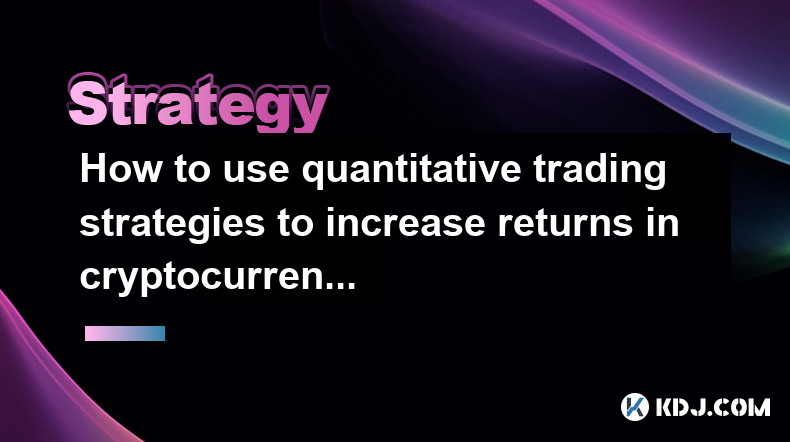-
 Bitcoin
Bitcoin $84,734.8249
-0.50% -
 Ethereum
Ethereum $1,594.1623
-0.39% -
 Tether USDt
Tether USDt $1.0000
0.01% -
 XRP
XRP $2.0674
-1.00% -
 BNB
BNB $593.9520
0.29% -
 Solana
Solana $139.3397
0.42% -
 USDC
USDC $1.0000
0.01% -
 Dogecoin
Dogecoin $0.1569
-1.33% -
 TRON
TRON $0.2416
-0.09% -
 Cardano
Cardano $0.6245
-0.91% -
 UNUS SED LEO
UNUS SED LEO $9.3277
-0.33% -
 Chainlink
Chainlink $12.9746
0.85% -
 Avalanche
Avalanche $19.6103
0.48% -
 Stellar
Stellar $0.2447
-0.92% -
 Toncoin
Toncoin $2.9844
-0.21% -
 Shiba Inu
Shiba Inu $0.0...01238
1.47% -
 Sui
Sui $2.1341
-0.78% -
 Hedera
Hedera $0.1641
-1.30% -
 Bitcoin Cash
Bitcoin Cash $334.7157
-1.07% -
 Polkadot
Polkadot $3.8717
3.85% -
 Hyperliquid
Hyperliquid $17.7266
-2.23% -
 Litecoin
Litecoin $76.5582
0.51% -
 Bitget Token
Bitget Token $4.4968
0.91% -
 Dai
Dai $0.9999
-0.01% -
 Ethena USDe
Ethena USDe $0.9992
0.01% -
 Pi
Pi $0.6322
-2.17% -
 Monero
Monero $216.7871
1.87% -
 Uniswap
Uniswap $5.2694
-0.02% -
 Pepe
Pepe $0.0...07469
2.80% -
 OKB
OKB $50.6357
0.12%
How to use quantitative trading strategies to increase returns in cryptocurrency investment?
Successful crypto quant trading hinges on understanding market dynamics, rigorously backtesting strategies, managing risk through diversification, and utilizing appropriate tools for efficient execution and monitoring.
Mar 13, 2025 at 04:01 pm

Key Points:
- Understanding the unique characteristics of cryptocurrency markets is crucial for successful quantitative trading.
- Identifying suitable quantitative strategies requires careful analysis of historical data and market trends.
- Backtesting is vital to evaluate the effectiveness of a strategy before live implementation.
- Risk management is paramount, as cryptocurrency markets are highly volatile.
- Diversification across different cryptocurrencies and trading strategies can help mitigate risk.
- Utilizing appropriate tools and platforms is essential for efficient execution and monitoring.
How to Use Quantitative Trading Strategies to Increase Returns in Cryptocurrency Investment?
Quantitative trading (quant trading) in cryptocurrencies involves using mathematical and statistical models to identify and execute trades. Unlike discretionary trading based on intuition or news, quant trading relies on algorithms and data analysis. This approach aims to exploit market inefficiencies and generate consistent returns. However, success requires a deep understanding of both quantitative methods and the specific dynamics of the cryptocurrency market.
The first step is data acquisition. You'll need access to historical cryptocurrency price data, trading volume, and order book information. Many exchanges offer APIs to access this data. Consider factors like data quality, frequency (tick data is ideal but resource-intensive), and historical depth. The more comprehensive your data, the better your models can be.
Next, you need to choose a suitable quantitative strategy. Several approaches exist, including mean reversion, momentum trading, arbitrage, and market making. Mean reversion strategies capitalize on price fluctuations around an average. Momentum trading follows trends, buying assets that are rising and selling those falling. Arbitrage exploits price differences between exchanges. Market making involves providing liquidity to the market. The choice depends on your risk tolerance and market analysis.
Before implementing any strategy live, rigorous backtesting is crucial. This involves running your strategy on historical data to assess its past performance. Backtesting helps identify potential flaws and weaknesses in your approach, allowing for adjustments before risking real capital. Pay attention to metrics like Sharpe ratio, Sortino ratio, and maximum drawdown to gauge risk-adjusted returns.
Once backtesting shows promising results, you can begin paper trading. This involves simulating trades using virtual money to test your strategy in a risk-free environment. Paper trading helps you identify any unforeseen issues and fine-tune your approach before committing real funds. This step bridges the gap between theoretical analysis and live trading.
Implementing your strategy requires selecting the right trading platform and tools. Many platforms offer APIs for algorithmic trading, allowing you to automate your strategies. You'll need to ensure your chosen platform is reliable, secure, and compatible with your chosen programming language and algorithms. Careful platform selection is vital for seamless execution.
Risk management is crucial in cryptocurrency trading. The volatility of the market means significant losses are possible. Employing stop-loss orders, position sizing techniques, and diversification are essential risk mitigation strategies. Never invest more than you can afford to lose, and always have a well-defined risk management plan in place.
Diversification is a key component of a robust quant trading strategy. Don't put all your eggs in one basket. Diversify across different cryptocurrencies and even different trading strategies to reduce your overall portfolio risk. This helps to mitigate losses from individual asset price movements or strategy failures. Diversification doesn't eliminate risk but significantly reduces it.
Continuous monitoring and adaptation are essential. Cryptocurrency markets are constantly evolving, so your strategies need to adapt. Regularly review your strategy's performance, adjust parameters as needed, and consider incorporating machine learning techniques to enhance its adaptability to changing market conditions. Regular review is essential for long-term success.
Developing sophisticated quantitative models often requires programming skills. Languages like Python are popular choices due to their extensive libraries for data analysis and algorithmic trading. Familiarize yourself with relevant libraries such as Pandas, NumPy, and Scikit-learn. Understanding these tools is vital for efficient strategy development.
Remember, past performance is not indicative of future results. Even the most rigorously backtested strategies can fail in live trading due to unforeseen market events. Always remain vigilant, adapt to changing conditions, and never stop learning. The cryptocurrency market is dynamic and requires constant adaptation.
Frequently Asked Questions:
Q: What programming languages are best for quantitative cryptocurrency trading?
A: Python is the most popular choice due to its extensive libraries (Pandas, NumPy, Scikit-learn) for data analysis and algorithmic trading. Other languages like R and C++ are also used but Python's versatility and community support make it a strong preference.
Q: What are the major risks involved in quantitative cryptocurrency trading?
A: The high volatility of the cryptocurrency market is a major risk. Other risks include: algorithm failures, unexpected market events (e.g., regulatory changes, hacks), slippage (difference between expected and executed price), and exchange downtime.
Q: How can I backtest my quantitative trading strategies effectively?
A: Use historical data that accurately reflects market conditions. Employ robust statistical measures to assess performance (Sharpe ratio, maximum drawdown). Consider using multiple datasets and time periods for comprehensive evaluation. Use a platform designed for backtesting, and always paper trade before risking real capital.
Q: What are some examples of quantitative trading strategies in cryptocurrency?
A: Mean reversion (exploiting price fluctuations around an average), momentum trading (following price trends), arbitrage (exploiting price differences between exchanges), and market making (providing liquidity). More advanced strategies often incorporate machine learning techniques.
Q: Where can I find historical cryptocurrency data for backtesting?
A: Many cryptocurrency exchanges provide APIs for accessing historical data. Third-party data providers also offer comprehensive datasets, often at a cost. Ensure the data is reliable, accurate, and covers a sufficient historical period for meaningful backtesting.
Disclaimer:info@kdj.com
The information provided is not trading advice. kdj.com does not assume any responsibility for any investments made based on the information provided in this article. Cryptocurrencies are highly volatile and it is highly recommended that you invest with caution after thorough research!
If you believe that the content used on this website infringes your copyright, please contact us immediately (info@kdj.com) and we will delete it promptly.
- Jesse Pollak, the creator of Ethereum layer 2 blockchain Base, apologizes for the controversial artwork
- 2025-04-20 15:55:13
- Pi Network (PI) price drops 0.48% in the past 24 hours, now trading at $0.6219
- 2025-04-20 15:55:13
- Qubetics ($TICS) Leads the Charge as Crypto Season Heats Up. Here Are 4 Tokens to Watch
- 2025-04-20 15:50:12
- PepeX Captures the Attention of De-Risking Bitcoin Holders as BTC Markets Remain Rangebound
- 2025-04-20 15:50:12
- Cryptocurrency Continues to Break Barriers, and as 2025 Approaches
- 2025-04-20 15:45:13
- Despite its Origins as a Playful Memecoin, Dogecoin Now Stands on the Precipice of a Significant Market Rally
- 2025-04-20 15:45:13
Related knowledge

Is it a risk that SHIB's derivatives position is 3 times that of the spot?
Apr 20,2025 at 12:35am
Is it a risk that SHIB's derivatives position is 3 times that of the spot? The cryptocurrency market is known for its volatility and high-risk nature, and Shiba Inu (SHIB) is no exception. One of the metrics that traders and investors closely monitor is the ratio of derivatives to spot positions. SHIB's derivatives position being three times that of the...

What does SHIB's Cardano coefficient below 0.3 indicate?
Apr 19,2025 at 08:00am
What does SHIB's Cardano coefficient below 0.3 indicate? The Cardano coefficient, often used within the cryptocurrency community, is a metric that helps investors and analysts understand the correlation between different cryptocurrencies. When it comes to SHIB (Shiba Inu) and its Cardano coefficient falling below 0.3, this indicates a relatively low cor...

Is SHIB's TVL suddenly increasing by 20% a positive signal?
Apr 20,2025 at 08:07am
The sudden increase of SHIB's TVL (Total Value Locked) by 20% has sparked a lot of interest and speculation within the cryptocurrency community. TVL is an important metric that represents the total amount of assets locked in a DeFi protocol, indicating the level of user engagement and trust in the platform. In this article, we will explore whether this ...

Is the sudden decrease in liquidity of SHIB stablecoin pool dangerous?
Apr 20,2025 at 02:15pm
The sudden decrease in liquidity of the SHIB stablecoin pool has raised concerns among investors and market participants. Liquidity refers to the ability to buy or sell an asset without causing a significant price change, and a decrease in liquidity can have serious implications for the stability and functionality of a cryptocurrency ecosystem. In this ...

What to do when SHIB 1-hour level shows TD9 sequence?
Apr 20,2025 at 03:21pm
When the SHIB 1-hour level shows a TD9 sequence, it's important for traders to understand what this technical indicator means and how they can use it to inform their trading strategies. The TD9, or Tom DeMark Sequential, is a popular tool among traders for identifying potential reversals in price trends. In this article, we will explore what to do when ...

Is the golden cross of SHIB's EMA12 and EMA26 effective on the daily line?
Apr 19,2025 at 08:07pm
The golden cross of SHIB's EMA12 and EMA26 on the daily line is a topic of interest among cryptocurrency traders and investors. This technical indicator is often used to predict bullish trends in the market, but its effectiveness can vary depending on various factors. In this article, we will delve into the specifics of the golden cross for SHIB, its hi...

Is it a risk that SHIB's derivatives position is 3 times that of the spot?
Apr 20,2025 at 12:35am
Is it a risk that SHIB's derivatives position is 3 times that of the spot? The cryptocurrency market is known for its volatility and high-risk nature, and Shiba Inu (SHIB) is no exception. One of the metrics that traders and investors closely monitor is the ratio of derivatives to spot positions. SHIB's derivatives position being three times that of the...

What does SHIB's Cardano coefficient below 0.3 indicate?
Apr 19,2025 at 08:00am
What does SHIB's Cardano coefficient below 0.3 indicate? The Cardano coefficient, often used within the cryptocurrency community, is a metric that helps investors and analysts understand the correlation between different cryptocurrencies. When it comes to SHIB (Shiba Inu) and its Cardano coefficient falling below 0.3, this indicates a relatively low cor...

Is SHIB's TVL suddenly increasing by 20% a positive signal?
Apr 20,2025 at 08:07am
The sudden increase of SHIB's TVL (Total Value Locked) by 20% has sparked a lot of interest and speculation within the cryptocurrency community. TVL is an important metric that represents the total amount of assets locked in a DeFi protocol, indicating the level of user engagement and trust in the platform. In this article, we will explore whether this ...

Is the sudden decrease in liquidity of SHIB stablecoin pool dangerous?
Apr 20,2025 at 02:15pm
The sudden decrease in liquidity of the SHIB stablecoin pool has raised concerns among investors and market participants. Liquidity refers to the ability to buy or sell an asset without causing a significant price change, and a decrease in liquidity can have serious implications for the stability and functionality of a cryptocurrency ecosystem. In this ...

What to do when SHIB 1-hour level shows TD9 sequence?
Apr 20,2025 at 03:21pm
When the SHIB 1-hour level shows a TD9 sequence, it's important for traders to understand what this technical indicator means and how they can use it to inform their trading strategies. The TD9, or Tom DeMark Sequential, is a popular tool among traders for identifying potential reversals in price trends. In this article, we will explore what to do when ...

Is the golden cross of SHIB's EMA12 and EMA26 effective on the daily line?
Apr 19,2025 at 08:07pm
The golden cross of SHIB's EMA12 and EMA26 on the daily line is a topic of interest among cryptocurrency traders and investors. This technical indicator is often used to predict bullish trends in the market, but its effectiveness can vary depending on various factors. In this article, we will delve into the specifics of the golden cross for SHIB, its hi...
See all articles























































































